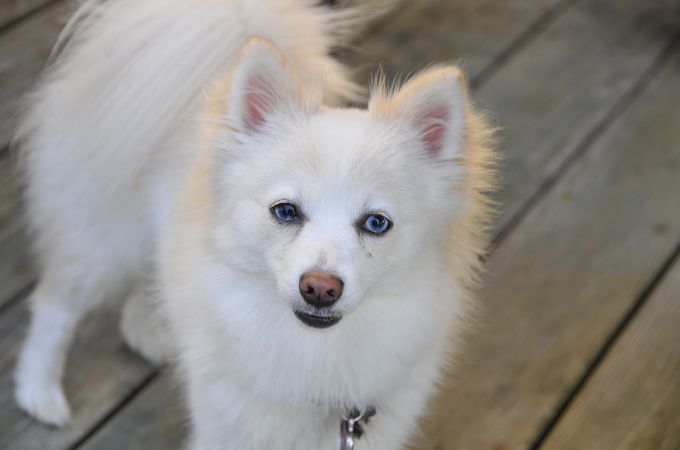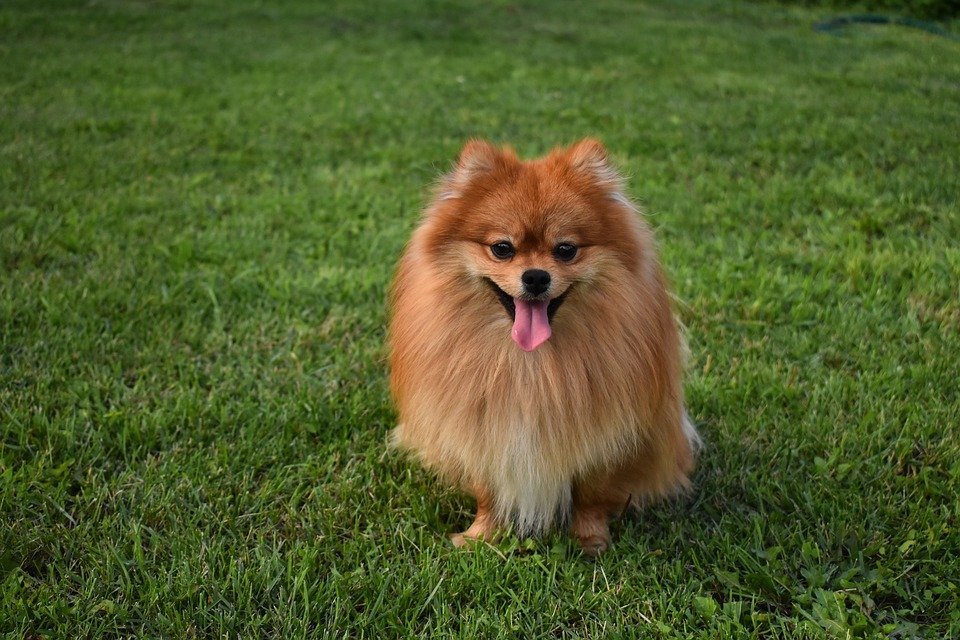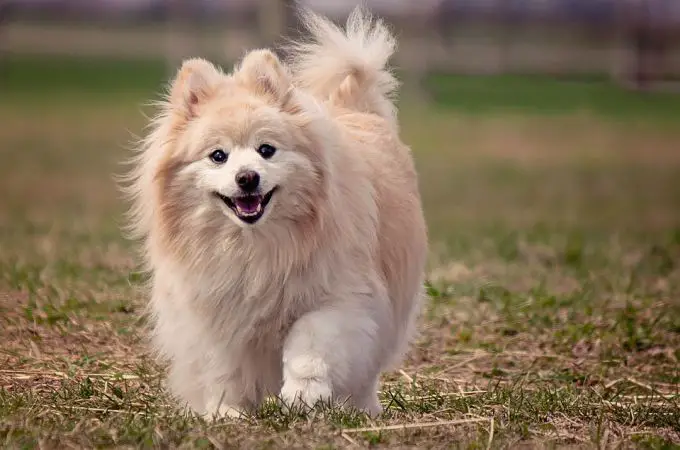If you want a cute and small dog, you might find the Pomeranian to be of interest. The Pomeranian dog is one of the best small Toy dog pets you can have. With the dog’s fox-like pansy or baby-doll looks, you can’t help but be in love with the little guy.
If you already have or are planning to get a Pomeranian puppy (or a full-grown Pomeranian dog), it can be essential to know the history, personality, and other things about your chosen dog pet.
Pomeranian Origin
When you look at a Pomeranian, you can’t imagine that this little tyke’s forerunners were large sled or working dogs from the Arctic regions. The dog got its name from Pomerania’s area located on the Baltic Sea’s southern shore in Central Europe between Poland and Germany.
To the 16th German’s these dogs are called Wolfspitz or Spitz type for short. The person who gave this name (Count Eberhard Zu Sayn) was referring to the dog’s facial features, which are like a “sharp point.”
Despite the dog’s name, the region of Pomerania is not the breed’s origin, albeit it is the area that has the credit of breeding the first Pomeranian dog. At this period, the breed has no proper documentation. Proper documentation was available when the dog was introduced in the United Kingdom.
The first Pomeranian breed was larger than today’s dog. A pair of dogs named Mercury and Phoebe in Sir Thomas Gainsborough’s paintings show a large-size dog that has a weight of 30 to 50 lbs (14 to 23 kg). At the same time, it has the physical traits we see in today’s Pomeranian. These two dogs are pets of King George III of England’s Queen-Consort Charlotte.
One member of the nobility established a large breeding kennel for this dog breed; her name is Queen Victoria of England, Queen-Consort Charlotte’s granddaughter. Queen Victoria’s red sable dog “Windsor’s Marco, ” weights at 12 lbs or 5.4 kg and made the small breed Pomeranian familiar with other breeders.
By importing other smaller dogs, the credit of promoting and improving the breed belongs to Queen Victoria. At this time, the dog size was reduced to 50% and would gain the common physical traits of today’s Pomeranian. King George IV of England and Napoleon I of France’s wife Josephine de Beauharnais are some great royal owners of the Pomeranian dog.
MUST-READ: Popular Pomeranian Mixes
England, in 1891 had the first breed club set up along with establishing the first breed standard for this dog breed. The year 1898 is the registration of the Pomeranian in the American Kennel Club’s registry while the recognition of the breed was in 1900.
Today in the United States, the dog is one of the most popular dog breeds. Along with the American Bulldog, German Shepherd Dog, and Labrador Retriever, the Pomeranian is in the list of top 20 dogs in the American Kennel Club’s registry since 1998. The dog’s rank in 1998 was #10, in 2011 #17, 2012 and 2013 in was in #19.
Outside the United States, the dog’s popularity has somewhat waned like in Australia, for example. Since 1986 the popularity of the dog in Australia has dropped and in 2008, there only 577 dogs in the registry.
Nevertheless, the Pomeranian has gone a long way from Arctic sled/work dog to family companion pet.
MUST-READ: Famous Designer Dog Pomeranian Husky Mix
Temperament of Pomeranian
As you would expect from a toy dog, the Pomeranian is playful, friendly, intelligent, feisty and loyal to its owner and family. Despite its cute looks, the dog can be bold, independent, curious and alert.
For a dog of its size, it can be aggressive towards other dogs and barks excessively as well as loudly. The dog is defensive of what it considers its territory and will often confront strangers as well as dogs bigger than it.
A Pomeranian dog is intelligent, so training is not hard, but not easy either. You can do some crate and house training on the dog, but expect it to be stubborn. Socialization training is another good way to discipline the dog. An adequately socialized Pomeranian will get along with other dogs and animals. When the dog is familiar with other people, it will be friendly with them.
The dog’s independent nature is such that it is a suitable pet for old or busy people. Individuals who live in apartments or homes with no backyard will also find the dog a suitable pet.
Families with small children are not suitable due to any unintentional harm the children may inflict on the dog.
When training a Pomeranian, always be firm, consistent, yet gentle and make sure the dog knows that you are in charge. The dog’s curious nature makes it suitable to go along for a walk and enjoy the sights as well as smells of the outside. You can also train the dog in obedience, agility, tracking and flyball exercises. You can have an easier time training dog if you begin while it is still a Pomeranian puppy. Make sure to read our guide about shiranian.
MUST-READ: Best Apartment Dog Breeds
Size
A Pomeranian has a height of 7 inches to 1 foot tall at its shoulders. Some are 5.0 to 11 inches (13 to 28 cm) high at it the dog’s withers. Its weight is about 3 to 7 pounds. However, it is not uncommon for a Pomeranian puppy to grow bigger and weigh 12 to 14 pounds. An average lifespan of a Pomeranian dog is 12 to 16 years.
Colors
Colors are what make a dog pleasing to a person’s eye, and the Pomeranian has lots of color in its coat hairs. Depending on the dog’s breeding history, the dog’s coat is solid, partis or dual colors, etc. Here are some examples of those colors.
- Blue – Blue is black in a diluted form. The fur may have a metallic tinge or dull look to a person’s eyes. The nose, lips, eye rims and paws have a blue tint. Blue is a beautiful color though it, not an ordinary type.
- Sable – This color has several variations: cream sable that is a light base coat with guard hairs that are black and chocolate sable, which is a brown coat with black hairs. Strangely if the sable coloring is very light, the color will not appear in a picture.
- Black – True black Pomeranians do not have secondary colors. However, particolored dogs do exist, and they are markings often present, but must not be bigger than 1/3 of the coat.
- Red – Not actually a red color, but a red-orange type that looks like rust. The fur is sometimes orange in its deepest and darkest coloring. Other variations are brown, chocolate and dark cream with an orange and red tint.
- Cream – Cream has several colors ranges like dark cream, deep cream, and light cream. When trying to distinguish a deep cream from a chocolate brown, look for a black pigmentation in the nose, lips, eye rims and paws. Also, Pomeranian puppies are born white sometimes. These puppies can easily be mistaken for white. When the puppies mature, their hair darkens.
- Orange – This color can be light or dark. If the orange’s color deepens then, this color becomes red. Orange brindle and orange sable colors have black stripes.
Pomeranian Pictures
Does a Pomeranian Shed?
Yes, they do though there are two kinds of the Pomeranian dog’s shedding.
Puppy Uglies Shedding
When your puppy is 4 to 6 months old, it will begin its puppy fur and do note that this is a regular occurrence in the puppy’s life. What happens is that the coat’s soft layer sheds off and is replaced by a coat that has a dense, double, thick inner layer along with an outer layer of long guard hairs. The color of the fur also changes at this time of shedding, albeit more drastic in fashion. For example, a white Pomeranian with a brindle ends up having a dark cream coat.
There’s a reason why the shedding has a name like “Puppy Uglies.” The puppy’s fur has lots of patches of missing hair. The puppy looks ugly at this phase, though it looks funny for some people. Once the Pomeranian reaches ten months old, its adult fur starts to grow, and by the time it reaches 12 to 15 months, a full coat has grown along with its new, permanent coat colors. Keep an eye out on where the puppy’s hairs have dropped. You will have to clean them up to keep your home and surroundings tidy.
Adult Shedding
There are several factors why an adult Pomeranian dog sheds.
- Climate and weather change – Technically, it’s the changes in light that trigger shedding. Days were becoming shorter trigger the dog’s fur to shed and replace it with a winter coat. Longer days trigger the notice for shedding the winter coat for a new one. All of these shedding activities take place within a two-month period for each period.
- Seasonal change – Similar to climate and weather change. However, the shift in temperature is another added factor and the shedding, in this case, is more noticeable.
If the dog experiences artificial lighting due to being indoors most if not all of the time, the cycle of hair shedding above is disrupted. Taking your pet outside for a walk can bring normalcy to its hair shedding cycle. - Year-round shedding is something that happens to the dog regardless of whether it has seasonal shedding. Like any other growth cycle in an animal, the dog’s hair grows, stops and falls off on a continual basis. Be ready to deal with this problem by brushing the dog’s dead shed hair on a daily basis. As for cleaning up the shed hair, it is no problem since it is easy to dispose of.
Finally, be watchful of the amount of hair your dog sheds. As adults, a Pomeranian does not lose many hairs. If the dog loses too much hair to the point of it becoming severe, then it’s best that you see a veterinarian. The chances are high that one or several health issues are causing this problem.
MUST-READ: Cute Dogs That Don’t Shed
Does a Pomeranian Sneeze?
To be more accurate, what happens is that your dog does a Reverse Sneeze, not a regular sneeze. If you hear gagging sounds coupled with startling snorts, it could be Reverse Sneeze. The cause of this problem is the irritation of the Pomeranian’s pharynx, throat, and laryngeal area. The irritation causes the throat and soft palate to spasm. Excitement, tight collars, household chemicals, a sudden change in temperature, perfume, pollen, and exhaustion are some of the triggers of a reverse sneeze. At worst nasal drip and infection in the respiratory system are the culprits.
Whenever a Pomeranian reverse sneezes, you may choose to bring your pet to a vet for a checkup. Most of the time, the dog’s reverse sneeze comes and goes quickly. Should the dog have a reverse sneeze, directly massages its throat gently or cover the dog’s nostrils briefly. However, if the reverse sneezes are negatively affecting your dog, then it’s a good time for a visit to the vet.
MUST-READ: Cutest Poodle Terrier Mixes
Price of Pomeranian Dogs
A Pomeranian puppy may cost $600 at a minimum, while the maximum price is $1,500. Depending on what kind of Pomeranian dog you want, the price may be different. If you want one as a pet companion, the dog will be much cheaper, while a show dog will be higher.
Being a purebred or mixed breed also determines the price. Finally, when buying a Pomeranian puppy, try to make sure that you buy only from trusted and reliable breeders. You don’t want to purchase a dog that is not physically healthy, thus wasting your money.
These are some of the useful and informative info about the Pomeranian dog. It has always been a great pet companion for dog lovers of all ages and stations in life for thorough out the dog breed’s history. Give your Pomeranian lots of love and care. An excellent dog such as this one deserves it all and more.
MUST-READ:12 Facts About Teacup Pomeranian Dogs




Interesting, just finished reading this blogpost. Very wonderful articles you got there. Definitely following your web! Thank you for everything.
The article’s in-depth look at the Pomeranian breed, including its history, personality, and care, is both informative and engaging. Particularly interesting is the mention of the Pomeranian’s ‘Reverse Sneeze,’ a phenomenon that aligns with the understanding of sneezing in dogs. This behavior, caused by irritation in the throat and laryngeal area, emphasizes the importance of being attuned to our pets’ unique behaviors and needs. From their Arctic origins to their status as beloved companions, Pomeranians are a fascinating breed, and this article serves as a comprehensive guide for enthusiasts and potential owners alike.